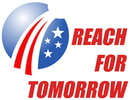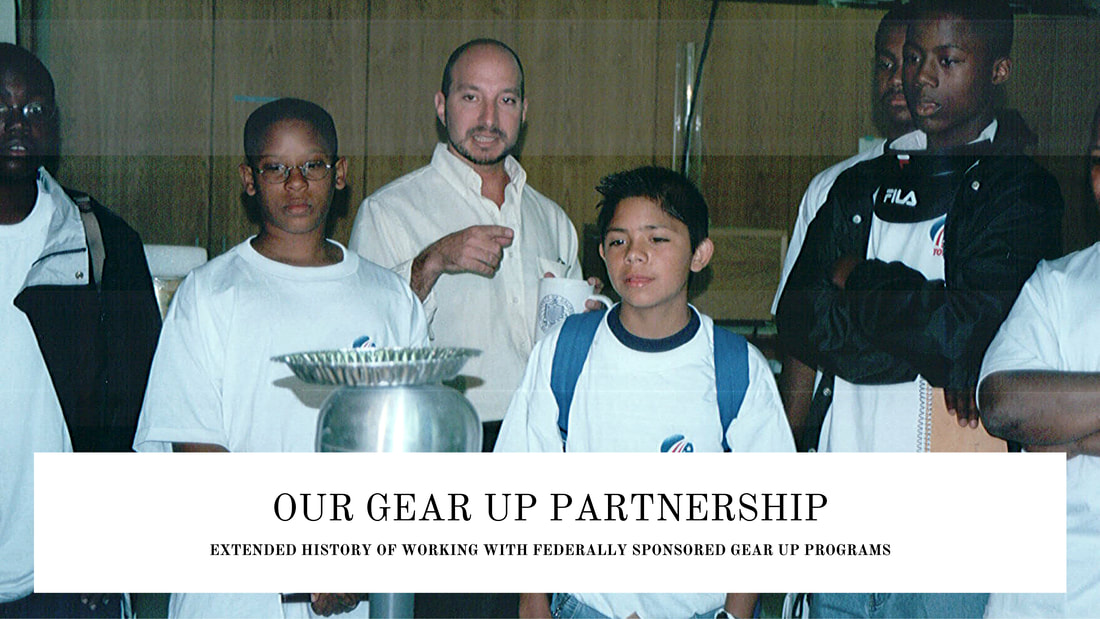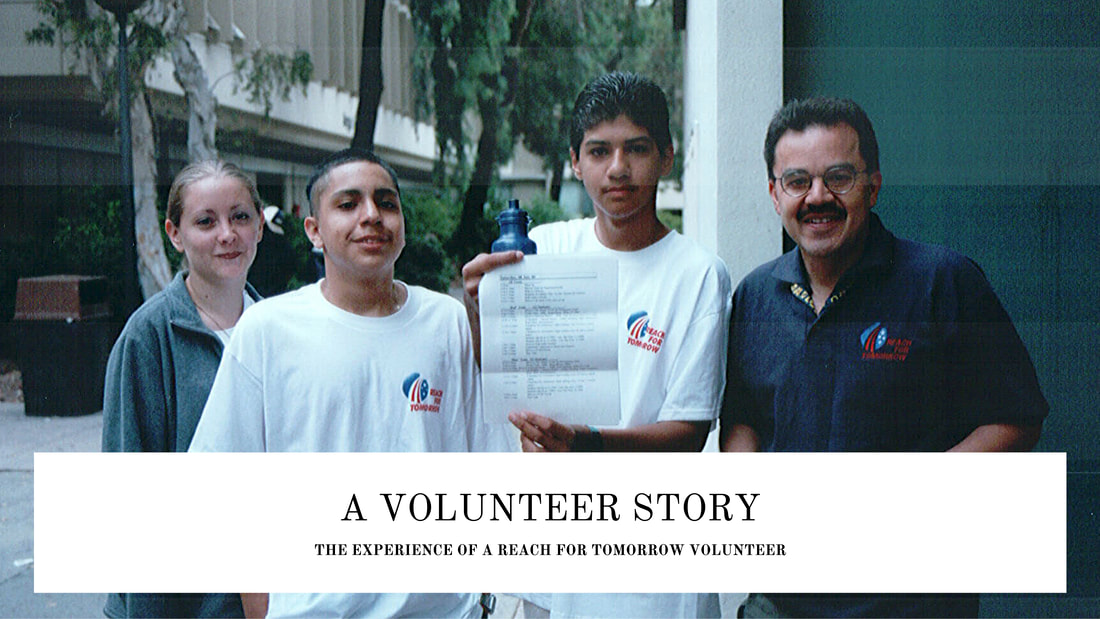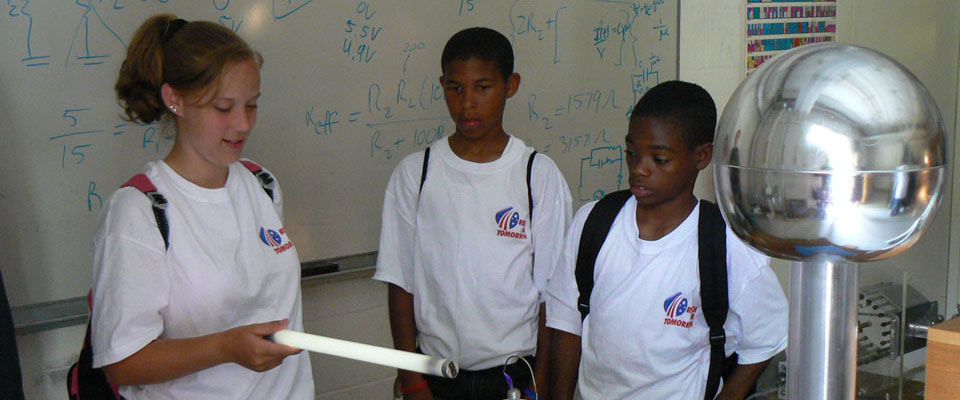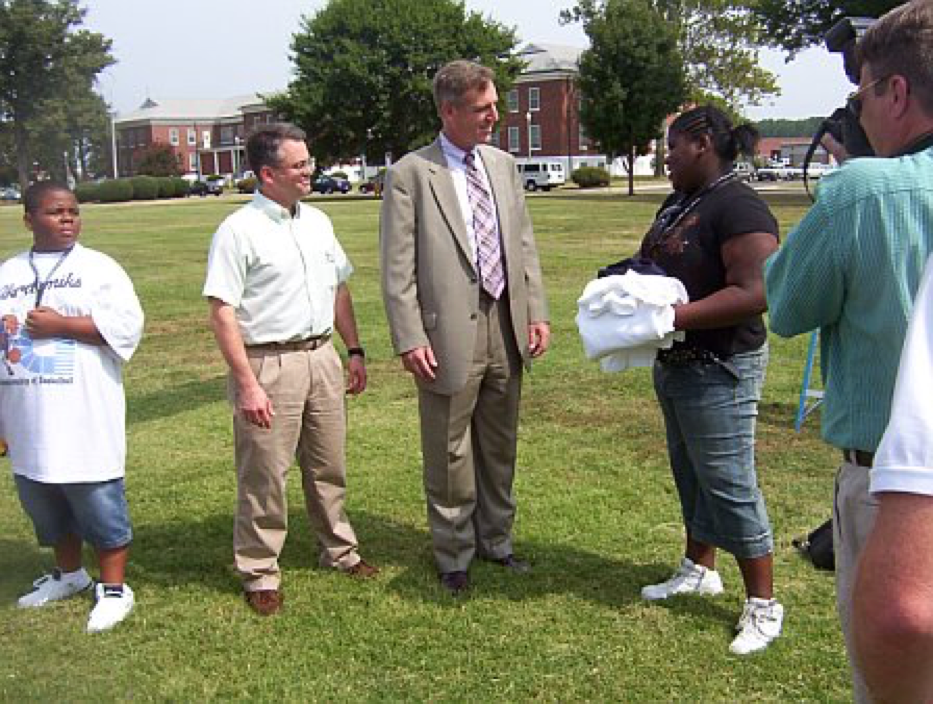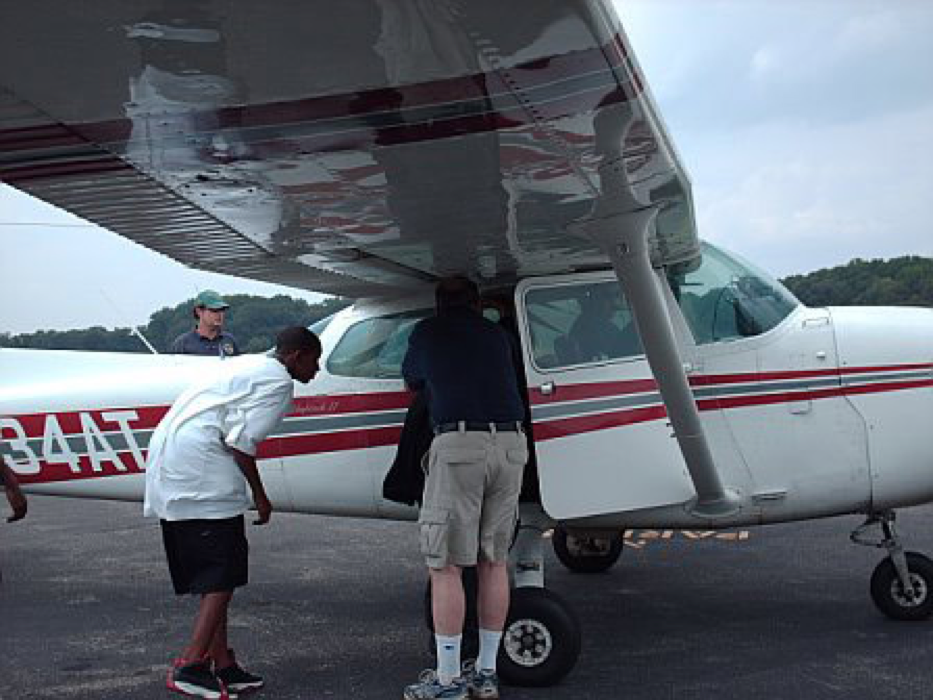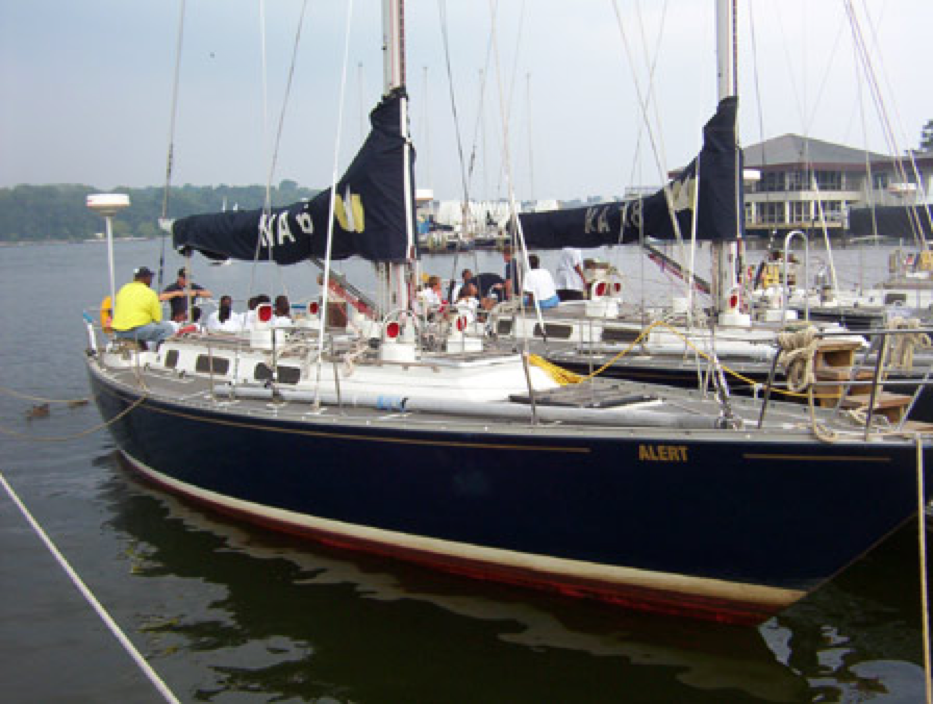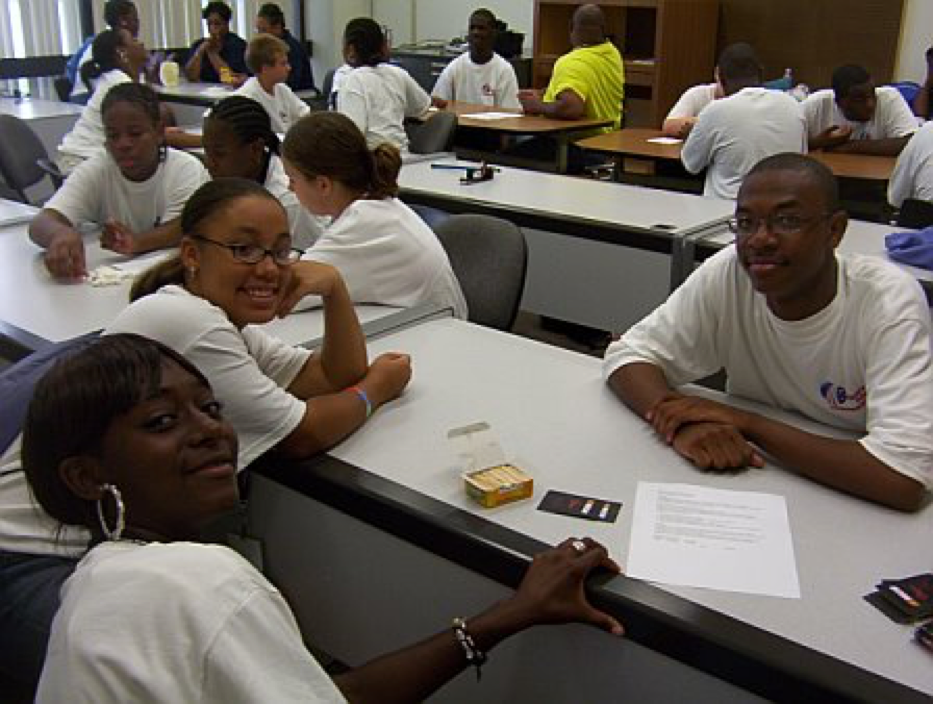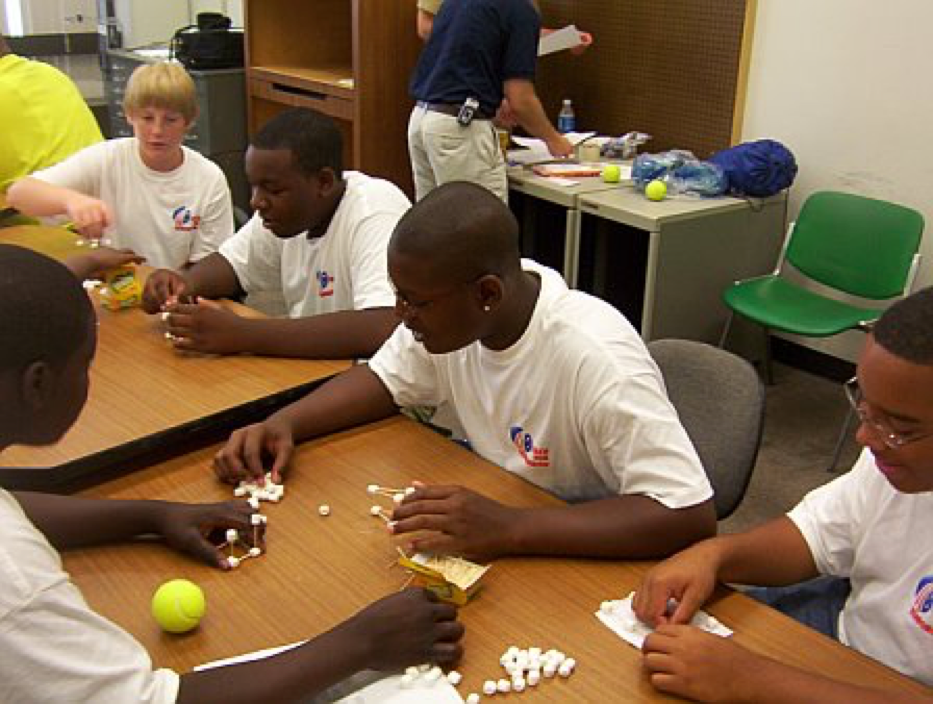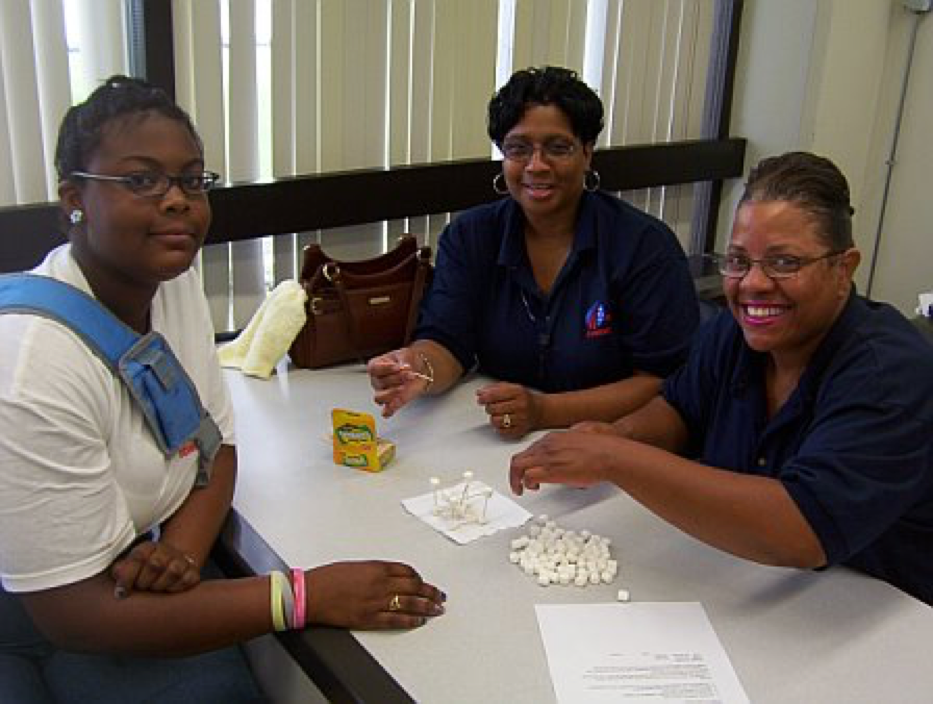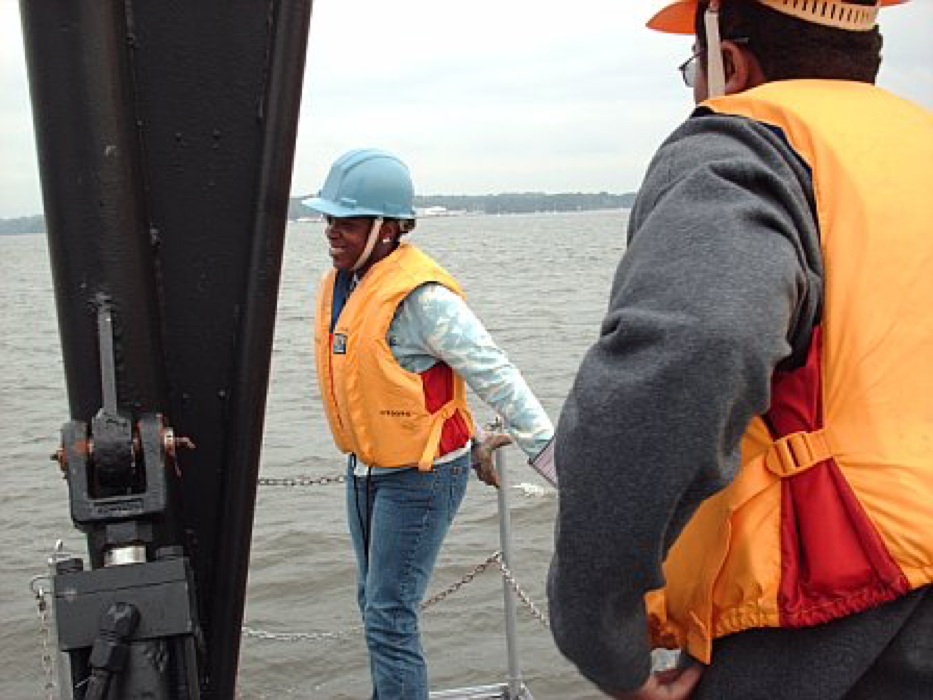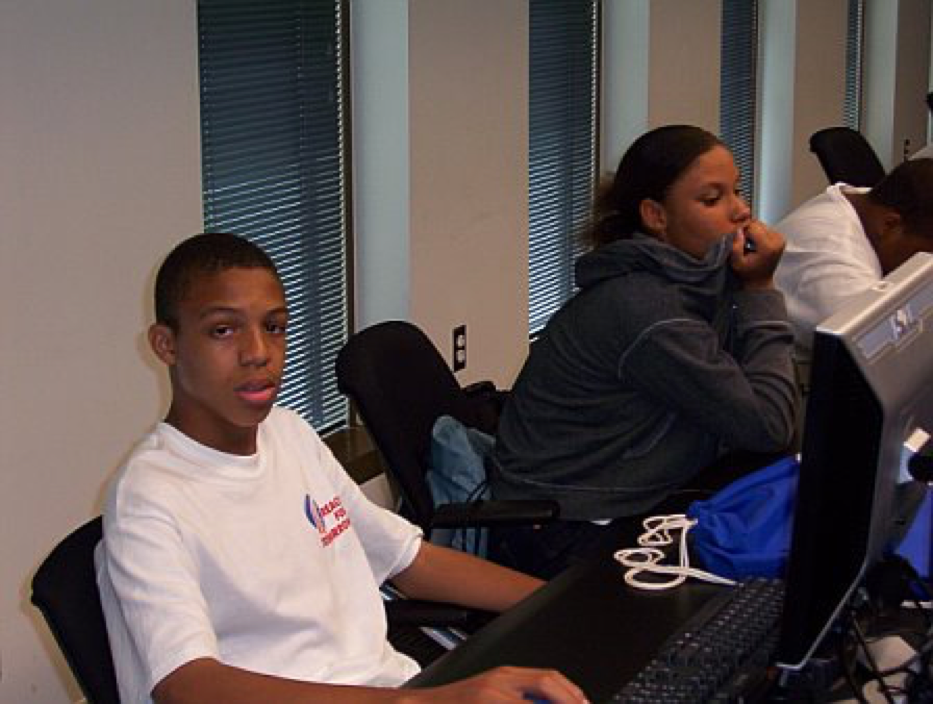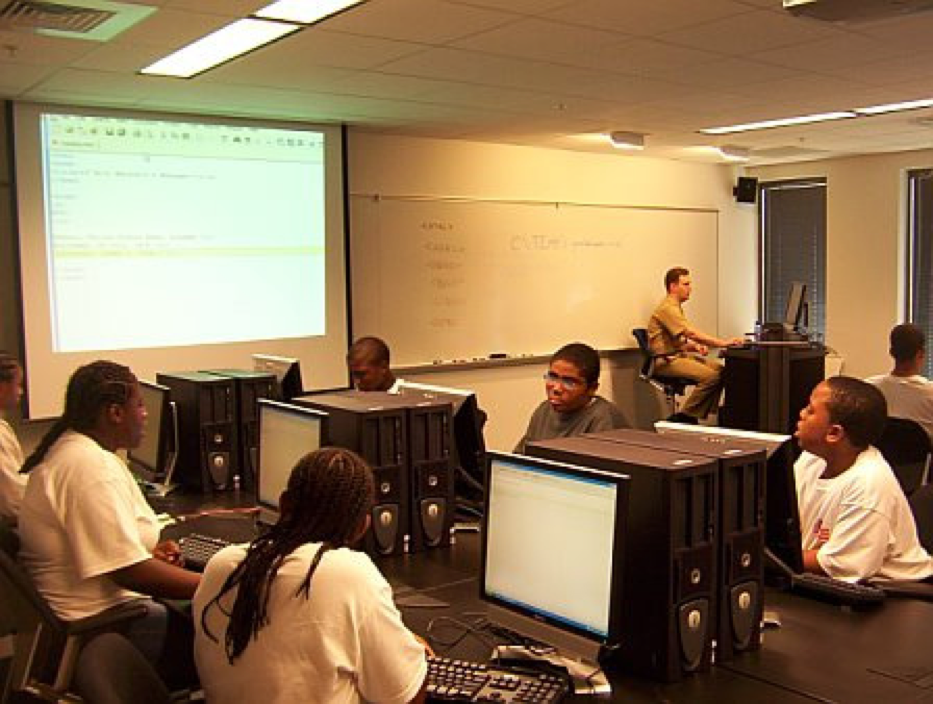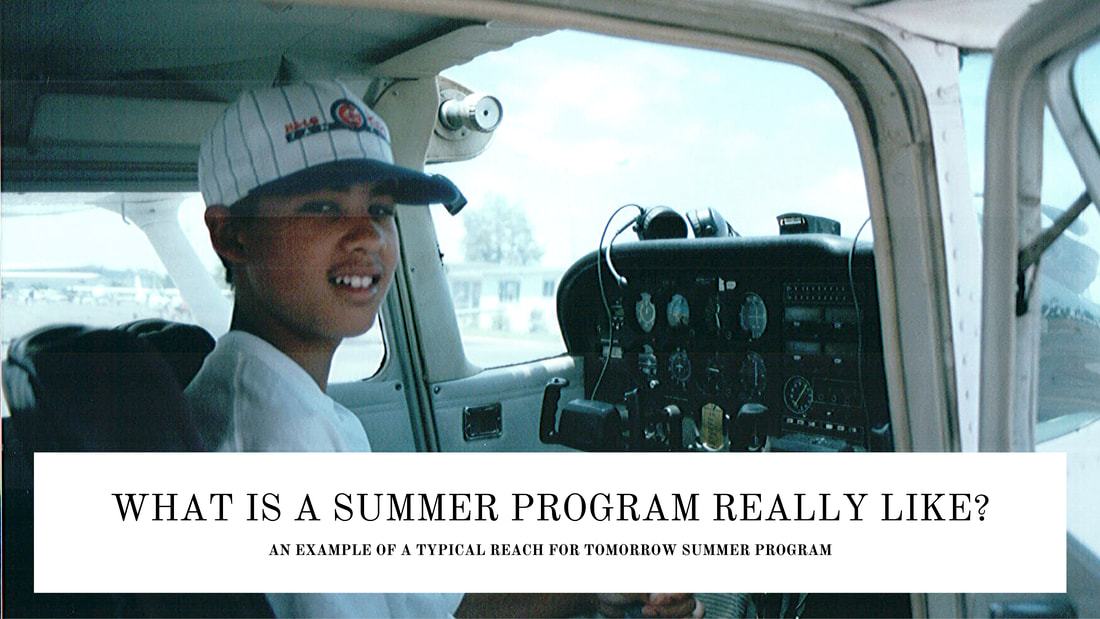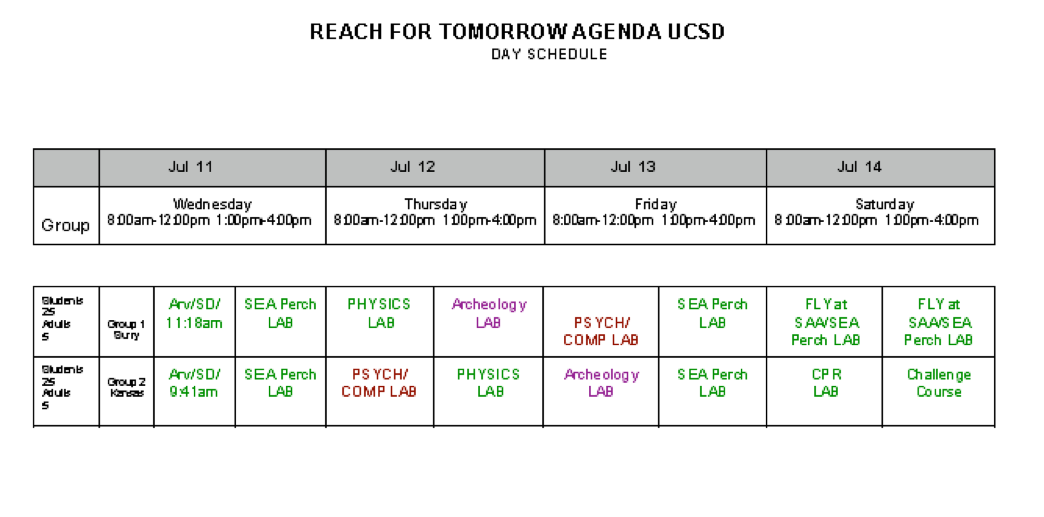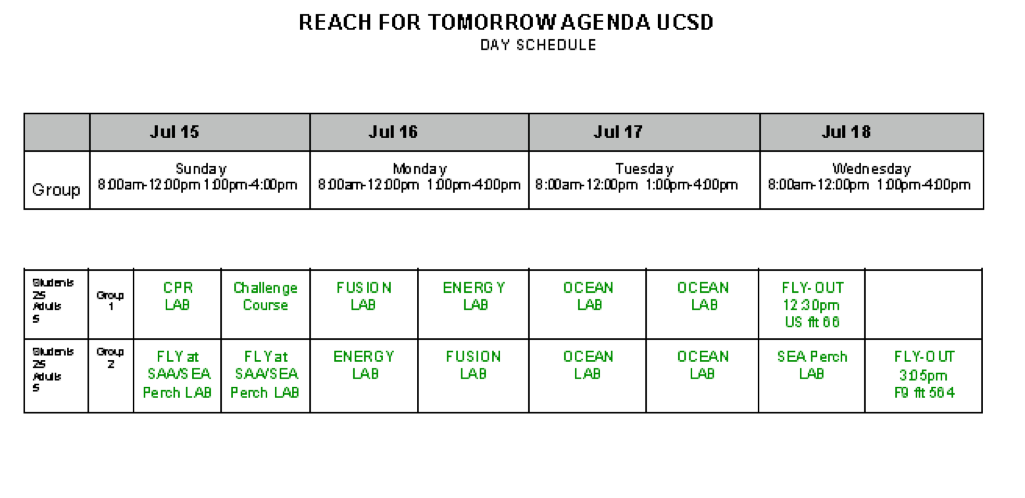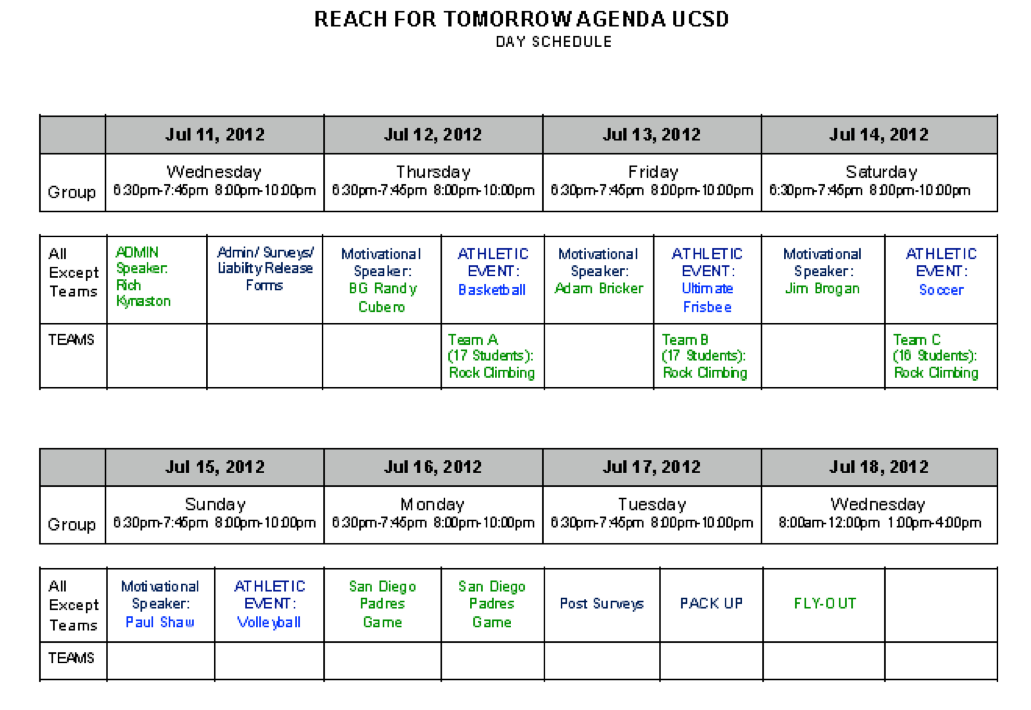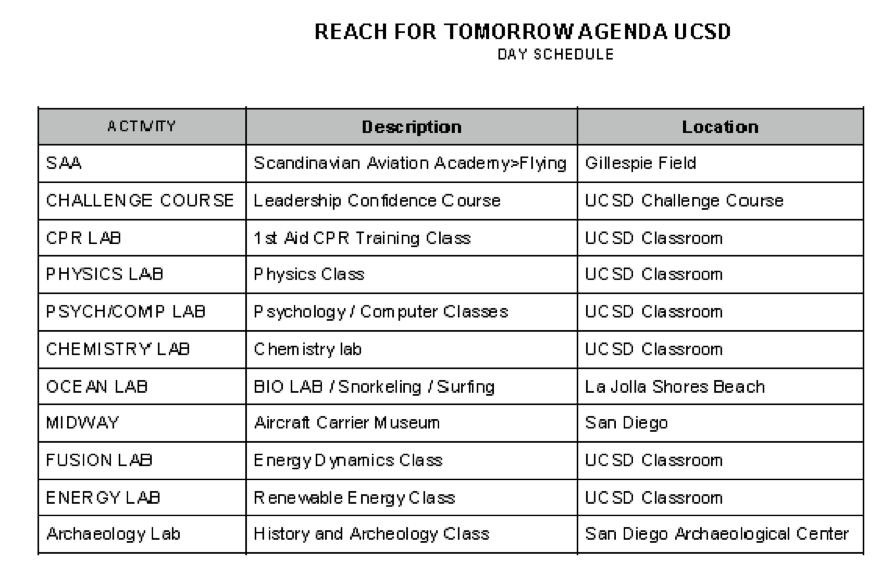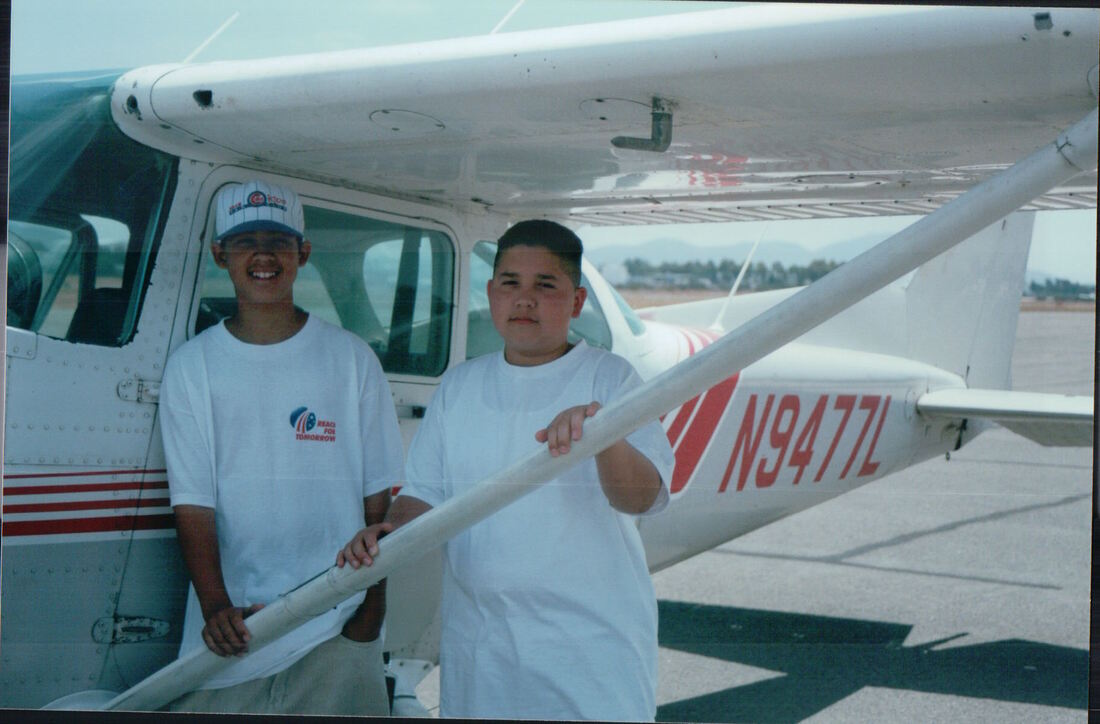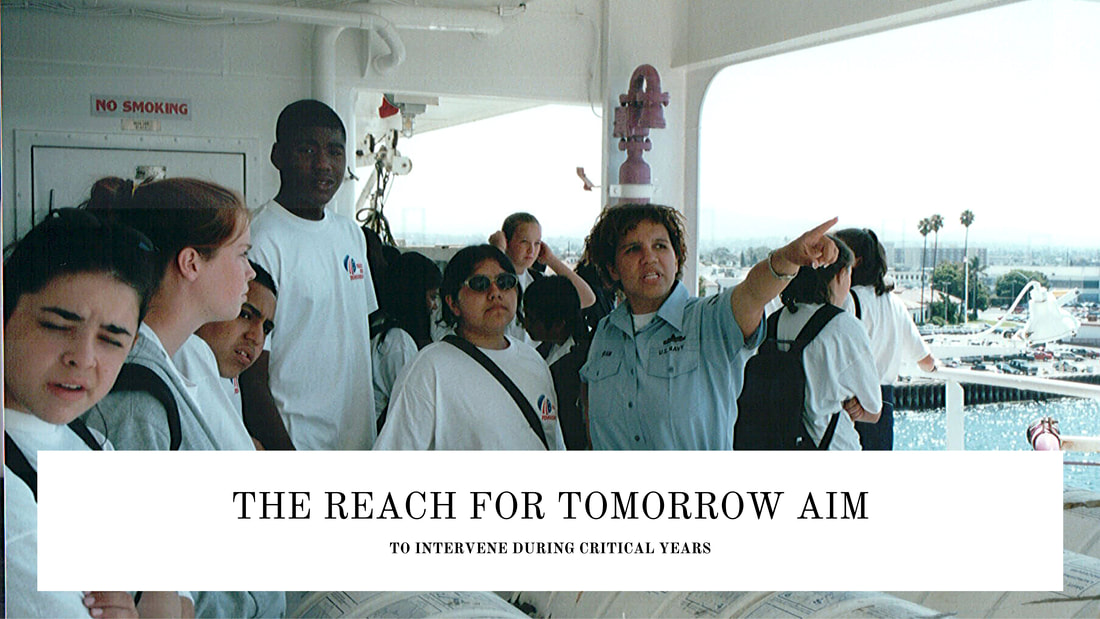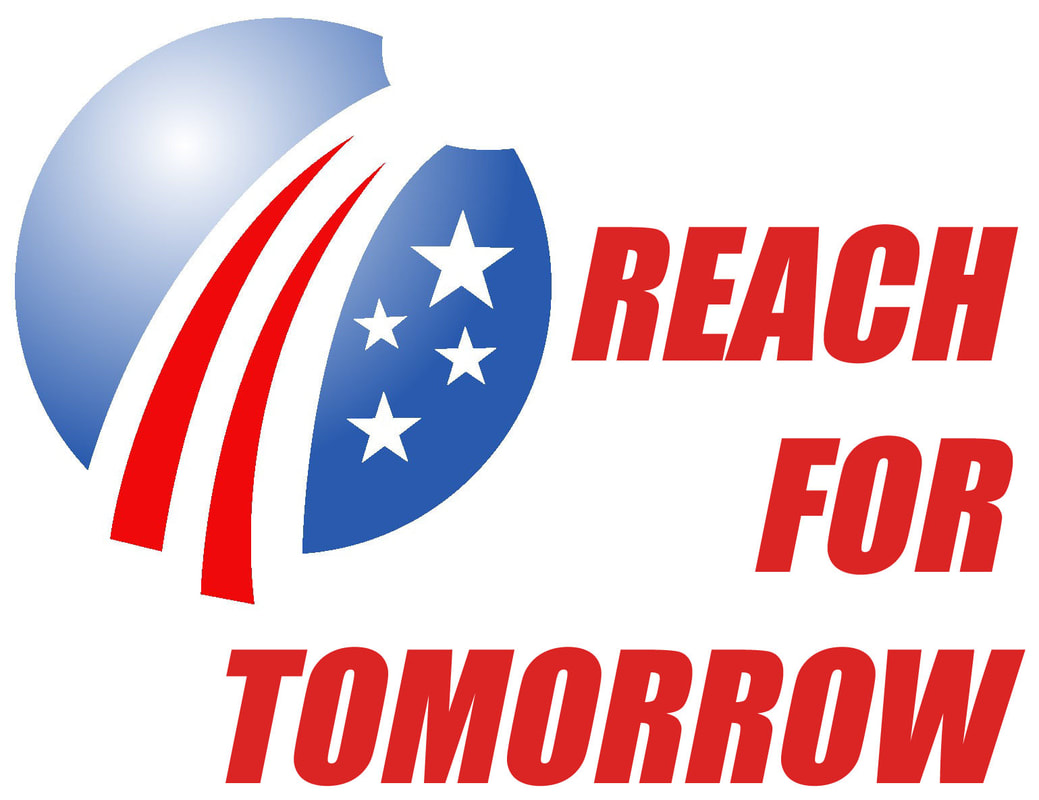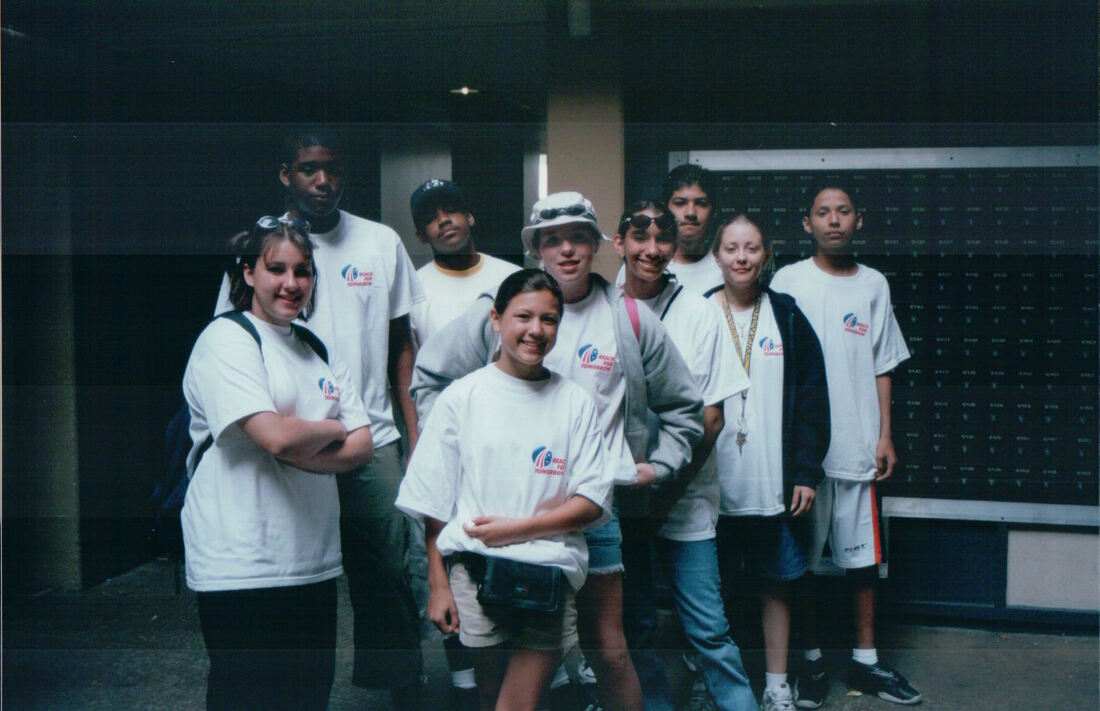 RFT GEAR UP Partnership Reach For Tomorrow, Inc. (RFT) has an extended history of working with federally sponsored GEAR UP programs using both our summer experiential programs and our web based academic programming. Additionally, RFT is a partner with the Wichita State University (WSU) GEAR UP program offering the both an academic and "in kind match" program. "In Kind Match" GEAR UP programs must secure matching funds annually in order to retain an awarded grant. RFT is able to assist GEAR UP awardees with a matching "in kind" contribution which includes virtually unlimited student and instructor access to a web based IT training program that contains more than 60,000 instructional streaming videos as well as state standard based instructional curricula content. The value per student and the nearly unlimited access to the program enables RFT to support GEAR UP program managers with a powerful value added tool to their proposals. Summer Experiential Programs Malcolm Gladwell in his treatise, Outliers , points specifically to a Johns Hopkins study by Karl Alexander wherein students were tested in June and again in September using a California Achievement Test over a 5 year period(Outliers, pp.255-258). This biannual distinction allowed researchers to focus on changes in student reading proficiency achieved during the summer months. Students were divided into three economic groups and throughout the academic year the low income students actually equaled or surpassed affluent student gains; however, by the end of the 5th year the high income students' measured gains were more than double those of the low income students. The difference maker it appears was what the students did during the summer.
1 Comment
The project director of the Step/I Have A Dream program, Chip Jardeleeza, had the following comments to add to those of the students:
“The trip to San Diego was an invaluable experience for the students in our program. Although the effects of such an experience may be difficult to measure at this time, high achievement can not be ignored and one must acknowledge the possible correlations that may exist. Three students who attended the trip to San Diego are showing great promise for this school year. Joshua Skrine, David Dorsey and Ronnisha Dorsey have hit the ground running this year with very impressive progress reports from their schools. Josh, who struggled for much of last year due to a lack of focus and commitment, has started his tenth grade year at Hyde Public Charter with a renewed sense of academic responsibility. He is maintaining all A's and B's in his classes while playing on the varsity football team. From a volunteer’s point of view, the trip to San Diego offered countless opportunities for students to consider the ideas of success and responsibility in life and in school. Our students traveled clear across the country, many flying for the first time. For a week they lived the college life complete with classes, labs, recreational activities and social events. They went to places where they had never been before, did things that they had never done before and saw things that they had never seen before. It is hard to imagine that such a rich experience would not affect a student in one positive way or another. What a great trip!” A week at the Naval Academy in 2006 Since 1995 Reach For Tomorrow, Inc. (RFT) has collaborated with the US Naval Academy to host a one week immersion for groups of middle school and high school students. More than 600 students have lived one-on-one with Midshipmen roommates the week before the Labor Day holiday. The goal of the program is not to convince teenagers to join the Navy or attend the Naval Academy, but to show them what they can achieve if they begin in 9th grade preparing for college. Arguably, if one works toward acceptance at the Naval Academy, one can attend virtually any college in the nation. The 2006 RFT program brought 34 students and 8 chaperons from Surry, Virginia selected from their 21st Century Community Learning summer program. They were joined by a smaller group of 6 students and one chaperon from Petersburg High School (VA) some of whom were members o f the Junior ROTC program. The adventure began before dawn as the Surry group met at the Luther P. Jackson Middle School before sunrise so they could arrive at the US Naval Warfare Center in Dahlgren, Virginia. Dahlgren is where Navy civilian engineers and scientists develop new weapons that might take 20 or more years to arrive in the fleet. Positioned on the Potomac River, the Navy test fires their newest guns at targets more than 20 miles down river. Surry students were exposed to the latest technology, the "rail gun", which uses no powder to fire the shell at a target; rather the projectile is fired using a powerful electric pulse! This might be in the fleet in 2025 or well after all the current engineers working on this project retire. The group learned that high school students can apply to work at any of the Navy Warfare Centers during school vacations and the summer as paid interns. This is open to high school students throughout the nation through the Science Engineering Apprentice Program or SEAP (see http://www.nswc.navy.mil/wwwDL/XD/RECRUIT/coop.html#). Lack of Future Scientists and Engineers at a Crisis Point In response to a report by the National Academy of Science, the Navy Sea Systems Command (NAVSEA) is determined to increase the number of "home grown" scientists and engineers by developing rather than discovering such talent. Within the next 5 years more than 50% of the current scientists will retire, and there are not enough replacements in the pipeline. The top leadership in the Navy wants the Navy to be considered the "employer of choice" for both those who wish to serve in uniform or be hired as civilians. For schools and students this means the current scientists and engineers are willing to visit a school to bring real world problems into the classroom either through video teleconferencing or a live scientist! dit. The 21st Century Community Learning Center grant is an after school program designed to provide academic enrichment for students in a school along with cultural experiences that broadens student perspectives and motivates them to stay in school and seek post secondary opportunities. Students and chaperons spent the remainder of the first day at Lee Field in Edgewater, MD at the Navy Annapolis Flight Training Center. Everyone attended a ground school bringing algebra one, chemistry, physics, and physiology into perspective. Each student piloted a light aircraft under the watchful eye of trained flight instructors who prepare Naval Academy Midshipmen for flight training after graduation. (This portion of the program can be seen live online at the RFT Video Library by playing the top video #18.) In past years RFT students ate their meals in King Hall with the Brigade of Midshipmen, but with the roof of King Hall removed for major renovations, the 2006 RFT group ate at the Naval station. After dinner students gathered in the Rickover Hall, the engineering sciences building at the Academy, to get to know one another and to learn specifics about the week and what was expected in terms of decorum. Each evening during the RFT program the academy Midshipmen who volunteer as roommates for the students have a 2-3 hour study period to prepare for classes the next day, so the RFT has a full evening schedule of activities each day. The first night, academy staff led by recent graduates described the process to prepare for any academy or college. The adult leaders welcomed the opportunity to sit as their days as RFT chaperons are long. They are up prior to the students so they can travel from the Navy Lodge to the Academy to meet with their teams of 5 students and ensure the group is ready for the day. Once the students leave Bancroft Hall where they bunk with the Mids, they cannot return until late in the evening. Adult leaders stay across the Severn River two to a room which allows them some time away from students each evening. Most RFT programs require adult supervision throughout the entire day and night. This program is designed with minimal "down time" to push students beyond what they are normally accustomed. Also if left alone young teens are capable of creating their own "fun" which may not correlate with the expectations of parents and RFT staff. The days begin before 6 AM and end at 11 PM, allowing adults to refer to the experience as the "RFT Sleep Deprivation and Weight Loss Program". This high degree of activity is why the summer experiences are only a week long- the adults find just one week a challenge. This memorable experience forms the basis for a long term relationship between an adult chaperon and a team of students. Day Two The agenda for the second day included sailing a 44 foot boat on the Chesapeake Bay, completing a series of innovative structural engineering experiments in the Systems Engineering Department, climbing the 60 foot wall at the Halsey Field House, and competing in a dodge ball tournament. The sailing enabled every student to take the helm of a sail boat, man the sails, or just relax aboard ship. In systems engineering students and adults marshmallow and toothpick structures in teams of 2-3. They toured the labs as well to see what the Midshipmen created as senior projects. Robots, cars, flying machines, and musical instruments were some of what each Midshipmen in this major constructed. The rock climbing wall in the field house allowed each student multiple opportunities to overcome their fear of height and gain self-confidence as most were able to prove to themselves that they could achieve much more than they initially thought they could. After dinner students had the chance to burn off additional calories during an indoor dodge ball tournament. With temperatures above 90 and the humidity everyone lost 3-5 pounds in water weight! Extra time was filled with a "talent show" put on by the Surry STEP teams who created a series of impromptu performances complemented by the Petersburg drill team members. Day Three Students split into several groups to sail aboard the Yard Patrol ships (YPs) used to train Midshipmen in duties aboard a ship such as steering , navigation, cooking, cleaning, etc. During their sophomore summer Mids spend three weeks managing life aboard a YP and each get hands on experience so they can better understand the surface warfare aspects of life in the US Navy. RFT students spent three hours navigating, practicing man over board drills to see which student team could complete a "rescue" the fastest, and discovering a little of what the Mids learn about life on the water. Other students spent their time in Computer Science labs learning the HTML coding behind all the web designs and making their own web sites. Then they toured the Rickover Hall participating in labs in propulsion and aerodynamics using the low speed wind tunnel. RFT realizes that not every student wants to become an engineer or scientist, so these labs are for the few whose eyes are opened to new subject areas and applications of the math and science classes they have already taken in middle and high school.
Surry RFT students Marquis Garrison and Jermaine High-Smith Ruffin learn about lift and drag coefficients in the low speed wind tunnel The commandant, Rear Admiral select Bruce Grooms, spoke about opportunities through education available to every student and invited all RFT students to consider the US Naval Academy. The Academy, like RFT, does not view our summer college visits as "recruiting" trips, rather chances to see what one can achieve through hard work and perseverance. After dinner the group enjoyed a presentation by Captain Jeff Sapp a graduate of the USNA, the first African American captain of the varsity football team, an All American, and a commander of large Navy ships. Jeff finished high school with below a 2.0 GPA, but due to his mentors in Colorado Springs and his exceptional athletic prowess (16 Varsity letters in high school and inducted into the Colorado High School Hall of Fame), he was accepted at the Academy. His initial lack of academic proficiency as a teenager has been tempered with three Master's degrees. Day Four By Thursday the group was in the swing of adapting to academy life, as students seemed to sit straighter in their seats and greet others more like their academy hosts. The morning began with labs in oceanography with Commander Jones who secured a Yard Patrol ship so students could conduct experiments in the Chesapeake Bay on water temperature and clarity and learn about weather and how the ocean impacts all our lives. The favorite lab was chemistry to make a variety of polymers, invisible ink, and finally two minute ice cream (after all, cooking is all about chemistry. . .). Commander Jones soliciting help from Surry RFT students Chandler Eley and Josephena Winfield to take temperature and water clarity readings from the Chespeake Bay. The afternoon featured a change in venue, as the group traveled to Andrews Air Force Base and visited the Air National Guard wing of F-16s that patrols the Capitol region regularly for errant aircraft that fly too close. Lt. Colonel Eric Gervais who is currently the finance officer for the 117th Tactical Fighter Wing directed the entire program for this third consecutive year, and his many years of maintenance experience provided each RFT participant with an in depth knowledge of what it takes to keep the aircraft combat ready. Visiting the 113 TFW and the F-16 Fighting Falcon at Andrews AFB Future fighter pilots Damien Savedge and Jermaine High-Smith Ruffin try the F-16 cockpit on for size as 21 Century Director Joahn Brown watches. While in the hangar students got inside F-16s, learned about their engines and various systems from the personnel who maintain them, and then visited the labs where technical analyses on the engine are completed. The particles in the engine oil are analyzed on a regular basis to determine the status of the engine, and since there is only one for the aircraft, this procedure is critical. Students were able to complete these samples using the Spectrometric Oil Analysis Procedure (or "SOAP") to see for themselves whether the engines tested needed to be repaired. TSGT. Smith of the 113th Maintenance Squadron allows students to use Spectrometric equipment that keeps the F-16 Falcon's engine ready to fight. Students also learned that there are Air National Guard units in each state in America and people can work part-time or full time. High school graduates can receive college tuition dollars after serving for a year, and upon graduation from college, these enlisted personnel can apply for pilot training and serve as pilots. Many then are able to join the commercial aviation community and work as airline pilots full time and fly jets for the Guard part-time or even work full time for the Guard. For years the Air National Guard has been considered the "best kept secret" in the Air Force. Upon returning to the Academy students competed in a track meet and had a pizza party with their Midshipmen hosts. How long does it always take to get a "group" photo where every face is visible? This was taken in the middle of traffic on a busy road and we nearly did it right. Day Five It rained! In fact the rain followed the students hone to Petersburg and Surry, as the latter were detoured multiple times due to washed out roads and bridges along with their entire area losing power for nearly a week. However, students and adults returned home for the Labor Day weekend with a different perspective on the usefulness of high school classes and the how education can change each of their lives. Outcomes Joahn Brown, project manager of the Surry, VA 21st Century Community Learning Center program, writes: "We have an average of 40-50 middle school students participating in our after school tutoring program. This past summer, the RFT program stressed the 3 "A"s (achievement, attitude and attendance). The 3 "A"s have been a top priority during our sessions this school year. Most of the RFT students have improved in all three areas. Several students ended last school year with below average to failing grades, high absenteeism and negative attitudes. Most of those students remain after school on a regular basis with a positive attitude, improved attendance and better grades. A few students have made merit roll once or twice this school year. To achieve merit roll, a student must have a "B" average with no grades lower than "C". The possible trips have also played a roll in adjusting the 3 "A" s. Only 2-3 of our students have ever been to California and the thought of spending a week at the University of San Diego has motivated some students to attend after school tutoring and improve their 3 "A"s. This increased attendance enables the staff to continue to motivate students to achieve academic excellence as demonstrated by last year's fifth grade students who scored 95% on their math SOL. My only regret is that I did not know about RFT sooner!" Below is an example of what an RFT summer program includes at a college location such as the University of California at San Diego (UCSD).
The days are long and there is no what is referred to as "down time" built into the schedule. Students and their adult chaperons are expected to participate in each activity, and the intensity of each day is such that we have limited the program to just one week. The adult chaperons cannot generally keep up after 7 days. This same schedule and type of activities can be created on any college campus as desired by RFT staff. Contact us to schedule a summer program for your students. To help students:
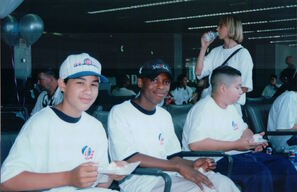 The Reach for Tomorrow strategy employed is based on the observation that the pre- and early high school years are critical years in a young person's life that frequently determine their academic future and life opportunities, but that all too often students who may have been enthusiastic, above average performers in school up to this point lose their interest in school, resulting in poor academic performance which never recovers. RFT aims to intervene during these critical years to help a student maintain his or her enthusiasm for and momentum towards academic and personal excellence, first by giving the student a first hand look at the interesting and enjoyable opportunities that good grades in high school can open up for them, and then by helping them reach these goals throughout their high school years and into the college or academy application process. RFT summer programming is not a recruiting tool for the military or any particular career field or college. It is a strategy to expose young people to what is possible in their futures, as we seek to actively immerse students in a wide scope of possibilities. We do use military resources when possible which provides hands-on training as well as expose young people to those who serve our nation. |
ArchivesCategories |
JOIN US
VOLUNTEERServe as a mentor. We have opportunities for you to volunteer not only on our summer programs but also throughout the year.
|
DONATEHelp us continue our mission to improve the Attitude, Attendance, and Achievement in rising high school students in order to increase the size of the qualified applicant pool for college and jobs and to become good American citizens.
|
PARTNERReach for Tomorrow always welcomes opportunities for additional partnerships with existing academic and after/out-of-school programs.
|
|
|
CONTACT US
Reach For Tomorrow Inc. |
Copyright 2019 Reach for Tomorrow, Inc. - A 501(c)(3) Nonprofit - All Rights Reserved
